Ayodhya, the birthplace of Lord Ram, has transformed into a major pilgrimage destination following the inauguration of the Ram Mandir. While thousands flock to witness the magnificent temple, the ancient city harbors numerous lesser-known sacred spots that carry profound significance in the Ramayana. These hidden gems offer not just spiritual fulfillment but also a deeper connection to Lord Ram’s life and legacy without the overwhelming crowds.
As a travel blogger who has explored Ayodhya extensively over five visits, I have discovered these tucked-away treasures that most one-day tourists miss. Whether you are a devoted pilgrim or a curious traveler, these eleven off-the-beaten-path locations will enrich your Ayodhya experience in ways the main temple complex alone cannot.
1. Vidyakund: Where Lord Ram Studied Under Guru Vashishtha
Just 2 kilometers from the main temple area lies Vidyakund, a serene water tank where tradition holds that Lord Ram and his brothers received their education under the guidance of Sage Vashishtha.
The peaceful surroundings make it perfect for contemplation. I visited early in the morning around 7 AM and found myself alone with just a few local devotees. The rectangular tank is surrounded by stone steps (ghats) and a small shrine dedicated to Guru Vashishtha stands nearby.

Why Visit: This spot represents Lord Ram’s years as a student and emphasizes the importance of education and guru-shishya (teacher-student) tradition in Hindu culture. The morning light reflecting on the water creates a magical atmosphere for meditation.
How to Reach: From Ram Mandir, take a shared auto or e-rickshaw for approximately ₹50, or walk for about 25-30 minutes.
Best Time to Visit: 6:30-8:30 AM for a peaceful experience before the day gets hot.
2. Janki Mahal: The Hidden Palace of Sita
Many visitors to Ayodhya completely overlook Janki Mahal, an ancient palace dedicated to Goddess Sita (also known as Janki). Located in the older part of town, this beautiful structure features traditional architecture that transports you back to another era.
What makes this place special is its connection to Sita’s life in Ayodhya after marriage. The locals believe parts of this palace contain chambers where she resided. The intricate wooden carvings and ancient artwork depicting scenes from Sita’s life make this a hidden architectural gem.
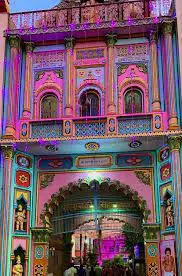
Why Visit: Experience a tangible connection to Goddess Sita beyond what’s portrayed in the main temples. The palace provides unique insights into royal living conditions of ancient Ayodhya.
How to Reach: Located in the old city, about 1.5 km from Ram Mandir. Most auto-rickshaw drivers know the location, though some might need you to specify “Purani Janki Mahal.”
Best Time to Visit: 10 AM-1 PM when the lighting is ideal for appreciating the artwork and architecture.
3. Sita Rasoi: The Sacred Kitchen
While the Ram Janmabhoomi site draws massive crowds, just a short walk away is Sita Rasoi—the kitchen where Goddess Sita is believed to have cooked meals during her time in Ayodhya. What’s fascinating is how this site presents everyday domestic life within the grand epic narrative.
Inside, you’ll find ancient cooking utensils, a traditional hearth, and items believed to have been used by Sita herself. The energy here feels distinctly feminine and domestic—a stark contrast to the more formal atmosphere of the main temples.

Why Visit: This intimate space helps visitors connect with the human aspect of divine figures. The kitchen represents the nurturing side of divinity and offers a glimpse into ancient culinary traditions.
How to Reach: Walking distance from Ram Mandir (approximately 800 meters).
Best Time to Visit: Afternoon hours between 3-5 PM when fewer visitors are present.
4. Dashrath Mahal: The Palace Where Ram Was Raised
The palace of King Dashrath, Lord Ram’s father, stands relatively quiet compared to the buzzing energy around the main temple. This ancient structure gives visitors a glimpse into the royal household where Ram spent his formative years.
During my visit, I was struck by how the palace complex brings to life many scenes described in the Ramayana—the royal court where Kaikeyi asked for her infamous boons, the chambers where Dashrath suffered in separation from Ram, and the areas where the young princes played.
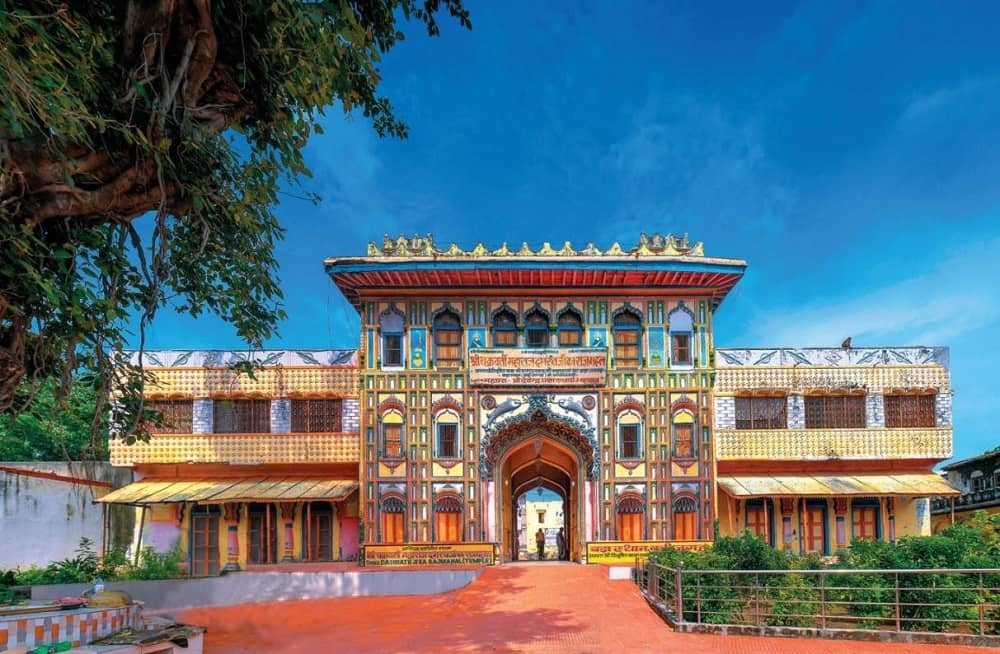
Why Visit: The palace offers historical context to the Ramayana narrative and helps visualize the royal life that Ram left behind for his 14-year exile. The architecture showcases ancient Awadhi style with intricate details.
How to Reach: About 1 km from Ram Mandir, easily accessible by e-rickshaw (₹30-40).
Best Time to Visit: Late afternoon when the golden sunlight enhances the ancient stonework.
5. Mani Parvat: The Hill of Gems
One of Ayodhya’s most overlooked natural landmarks, Mani Parvat is a hill where gems from Lord Ram’s crown allegedly fell. Standing at approximately 65 feet tall, this elevation offers panoramic views of Ayodhya and the Saryu River that few tourists ever experience.
At the summit sits a small temple and meditation spots where you can sit in quiet contemplation away from the city’s hustle. I spent an hour here during sunset on my last trip and counted only seven other visitors during that time.
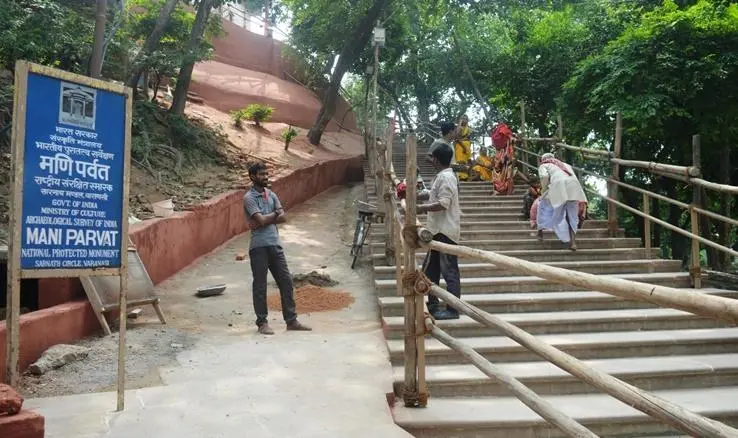
Why Visit: Beyond its religious significance, Mani Parvat provides the best viewpoint in Ayodhya. Photographers will appreciate the sweeping landscapes, especially during golden hour.
How to Reach: About 3 km from Ram Mandir. Auto-rickshaws charge around ₹80-100 one way.
Best Time to Visit: Sunset offers magical views, approximately 5:30-6:30 PM depending on the season.
6. Nageshwarnath Temple: Lord Shiva’s Blessing to Ram
According to local legend, this ancient Shiva temple was established by Ram’s son Kush. The story goes that Kush lost his armlet (nagmani) while bathing in the Saryu River, which was retrieved by a Nag-kanya (serpent princess) who fell in love with him. Kush established this temple in gratitude.
What’s remarkable about this temple is its connection between the Ram tradition and Shaivite worship. The temple architecture dates back centuries, with renovations from various periods creating an interesting architectural palimpsest.
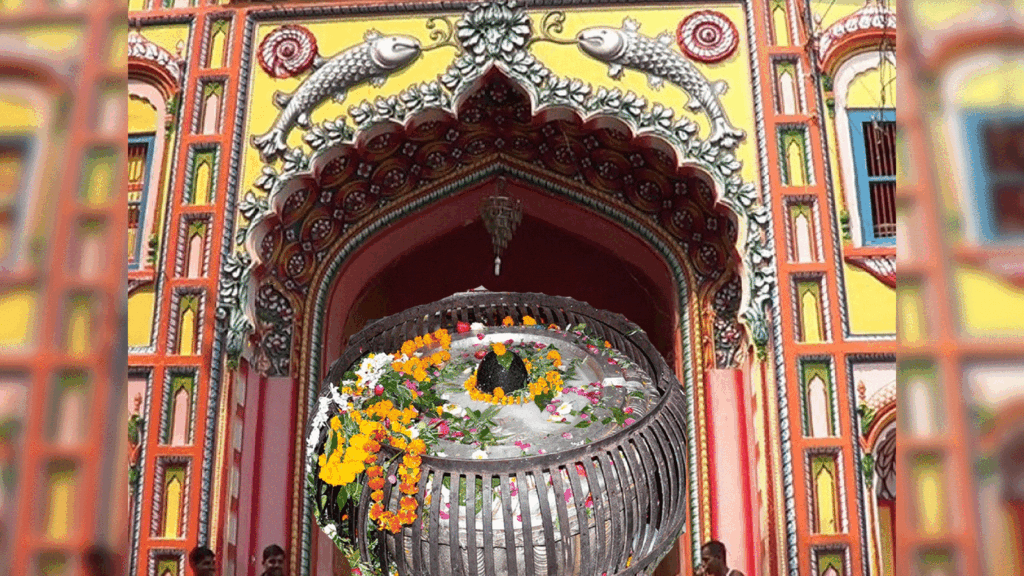
Why Visit: This temple represents the continuity of Ram’s legacy through his son and highlights the interconnectedness of different Hindu traditions. The ancient stone carvings are worth studying for their artistic value.
How to Reach: Located approximately 1.2 km from Ram Mandir, near Tulsi Udyan.
Best Time to Visit: Early mornings around 7-8 AM when the temple is relatively quiet and the morning aarti takes place.
7. Ram Katha Park and Museum: The Story Beyond the Temple
While most visitors focus solely on temples, the Ram Katha Park and Museum offers a comprehensive understanding of Lord Ram’s life through artifacts, manuscripts, and artistic representations. This beautifully maintained space houses rare items dating back centuries.
The museum collection includes ancient versions of the Ramayana, royal proclamations relating to Ayodhya, artwork depicting Ram’s life, and archaeological findings from the region. The surrounding park provides shaded walking paths with informative plaques.
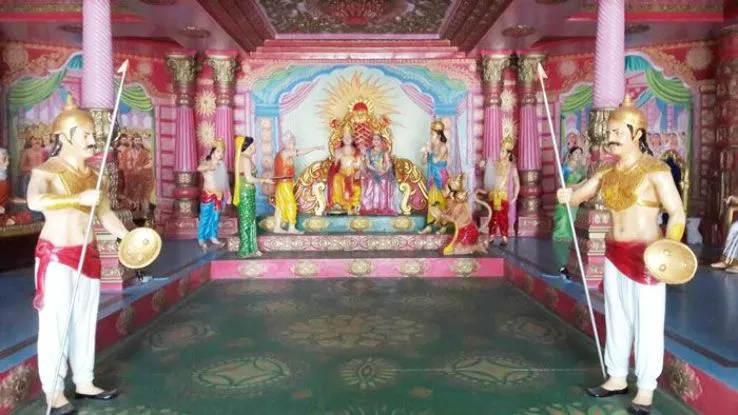
Why Visit: For those seeking historical and cultural context beyond spiritual experience, this museum fills crucial knowledge gaps. It’s especially valuable for understanding how Ram’s story has evolved through different artistic interpretations.
How to Reach: About 2 km from Ram Mandir, accessible by auto-rickshaw (₹50-70).
Best Time to Visit: 11 AM-1 PM on weekdays when school groups are less likely to visit.
8. Tulsi Smarak Bhawan: Where Ramcharitmanas Was Composed
This memorial dedicated to Goswami Tulsidas, author of the beloved Ramcharitmanas, is a literary landmark that spiritual travelers shouldn’t miss. Though Tulsidas composed much of his work in Varanasi, this Ayodhya monument houses original manuscripts and personal items.
The building itself is a more recent construction, but it contains genuinely ancient artifacts. The peaceful reading rooms and contemplative spaces make it perfect for those who appreciate the literary dimensions of Ram’s story.
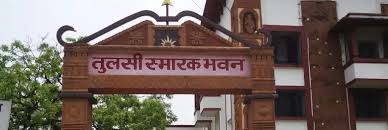
Why Visit: For lovers of literature and those interested in how Ram’s story was preserved and popularized through centuries. The Bhawan regularly hosts recitals of the Ramcharitmanas that are deeply moving even if you don’t understand the language.
How to Reach: Located about 1.5 km from Ram Mandir, near Kanak Bhawan.
Best Time to Visit: Afternoons around 3-4 PM when recitals often take place.
9. Treta Ke Thakur: Where Ram Performed Ashwamedha Yagna
This temple marks the site where Lord Ram supposedly conducted the Ashwamedha Yagna (horse sacrifice) after returning from Lanka. What makes this temple unique is that it houses statues of Ram and Sita made of black sandstone, believed to date back to the Gupta period (4th-5th century CE), making them some of the oldest representations of the divine couple.
Unlike the grand marble and gold structures elsewhere, this temple maintains a rustic, authentic feel that connects visitors to ancient worship practices. The sanctum has a distinct energy—more solemn and historically weighty.
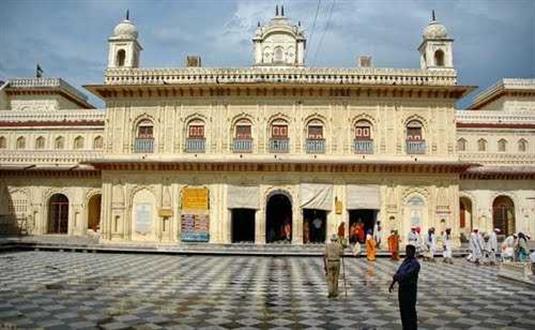
Why Visit: The ancient statues provide a rare glimpse into early artistic representations of Ram. The site connects visitors to important post-Ramayana events not covered in most tellings.
How to Reach: Located about 1 km from Ram Mandir, accessible by e-rickshaw.
Best Time to Visit: Morning hours between 8-10 AM when prayers are being offered but crowds remain thin.
10. Gulab Bari: The Forgotten Rose Garden
Though primarily associated with Nawabi heritage rather than Ramayana directly, local traditions suggest this area was once part of the ancient gardens where Ram and Sita walked. During the later Nawabi period, it was converted into a Persian-style rose garden with architectural additions.
This unique site represents the layered history of Ayodhya and how sacred spaces evolve over time. The fusion of Hindu and Islamic architectural elements makes it architecturally significant beyond its spiritual connections.
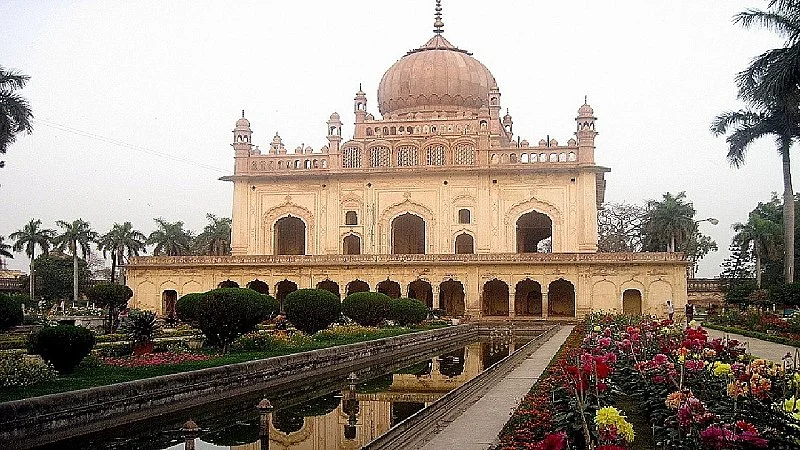
Why Visit: This peaceful garden offers a different aesthetic experience from the temple architecture. The fragrant roses (during season) and quiet corners provide perfect meditation spots.
How to Reach: About 2.5 km from Ram Mandir, best reached by auto-rickshaw (₹60-80).
Best Time to Visit: Morning hours for the fragrance of roses or late afternoon for beautiful light through the archways.
11. Ksheer Sagar: The Ocean of Milk
This unassuming water tank carries profound mythological significance. According to local belief, this site represents the cosmic ocean of milk where Lord Vishnu rests between creation cycles. Since Ram is considered an incarnation of Vishnu, this site creates a cosmic link between Ram’s earthly story and his divine origin.
Few tourists visit here, making it an ideal spot for quiet contemplation. The small shrine nearby contains beautiful paintings depicting the churning of the cosmic ocean (Samudra Manthan).
Why Visit: This site offers a deeper mythological context to Ram’s story and connects the local narrative to broader Hindu cosmology. The peaceful surroundings make it ideal for meditation.
How to Reach: Located about 3 km from Ram Mandir, requires an auto-rickshaw ride (approximately ₹70-90).
Best Time to Visit: Early mornings around sunrise when the water reflects the changing colors of the sky.
Planning Your Visit to These Hidden Gems
To make the most of these lesser-known sites, I recommend:
- Allocate at least two days in Ayodhya to explore beyond the main temple complex.
- Hire a knowledgeable local guide who specializes in these hidden spots (expect to pay ₹1,500-2,000 per day).
- Visit Ram Mandir early on day one, then explore the lesser-known sites afterward when crowds thin out.
- Carry water and wear comfortable walking shoes as some sites require walking through narrow lanes.
- Download offline maps as internet connectivity can be spotty in some areas.
- Consider visiting during shoulder seasons (August-September or February-March) to avoid extreme weather and crowds.
What Makes These Hidden Places Special
What distinguishes these eleven sites from the main attractions is the opportunity for personal connection without crowds. In my experience, these places offer:
- Deeper storytelling about specific episodes in the Ramayana.
- Archaeological significance that mainstream tourism often overlooks.
- Meditative spaces where you can reflect without being rushed.
- Local interactions with caretakers who often share oral traditions not found in guidebooks.
- Photographic opportunities without crowds of people in the frame.
Final Thoughts: Beyond the Obvious in Ayodhya
Ayodhya’s significance extends far beyond the newly constructed Ram Mandir. These eleven hidden spots offer a more complete picture of Lord Ram’s life, legacy, and the cultural heritage surrounding the Ramayana.
By venturing off the standard tourist path, you’ll discover the multidimensional nature of this ancient city—where mythology, history, architecture, and living traditions create a tapestry that has endured for millennia.
The next time you plan a pilgrimage to Ayodhya, set aside time for these lesser-known treasures. They may not appear in every guidebook or tour package, but they hold keys to understanding the deeper significance of why Ayodhya remains central to Indian spiritual consciousness.
Have you discovered any other hidden gems in Ayodhya with connections to Lord Ram? Share your experiences in the comments below!

